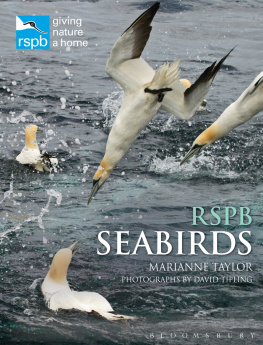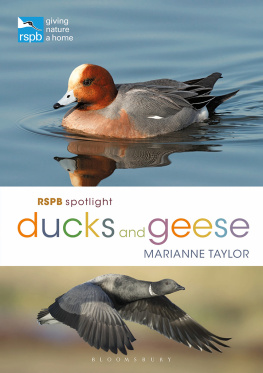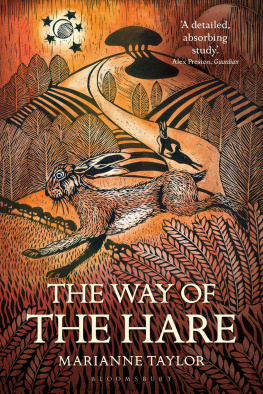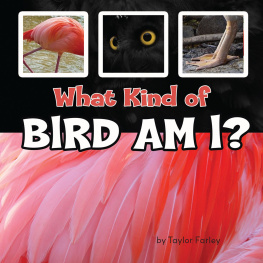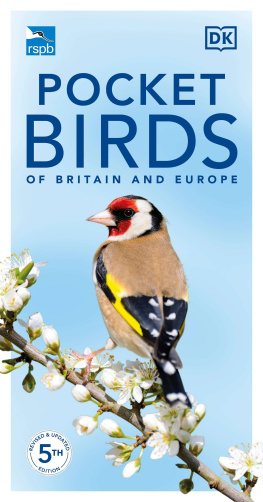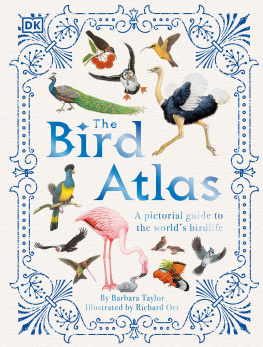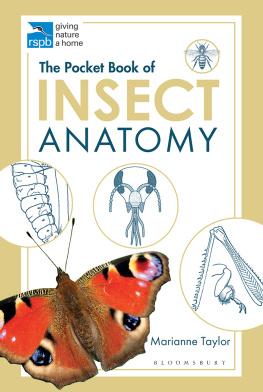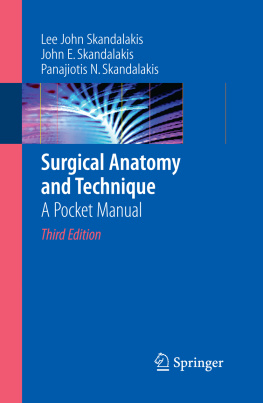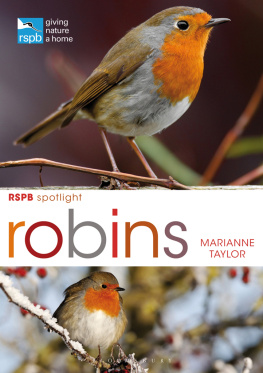Marianne Taylor - The Pocket Book of Bird Anatomy
Here you can read online Marianne Taylor - The Pocket Book of Bird Anatomy full text of the book (entire story) in english for free. Download pdf and epub, get meaning, cover and reviews about this ebook. year: 2020, publisher: Bloomsbury Publishing, genre: Religion. Description of the work, (preface) as well as reviews are available. Best literature library LitArk.com created for fans of good reading and offers a wide selection of genres:
Romance novel
Science fiction
Adventure
Detective
Science
History
Home and family
Prose
Art
Politics
Computer
Non-fiction
Religion
Business
Children
Humor
Choose a favorite category and find really read worthwhile books. Enjoy immersion in the world of imagination, feel the emotions of the characters or learn something new for yourself, make an fascinating discovery.
- Book:The Pocket Book of Bird Anatomy
- Author:
- Publisher:Bloomsbury Publishing
- Genre:
- Year:2020
- Rating:5 / 5
- Favourites:Add to favourites
- Your mark:
- 100
- 1
- 2
- 3
- 4
- 5
The Pocket Book of Bird Anatomy: summary, description and annotation
We offer to read an annotation, description, summary or preface (depends on what the author of the book "The Pocket Book of Bird Anatomy" wrote himself). If you haven't found the necessary information about the book — write in the comments, we will try to find it.
The Pocket Book of Bird Anatomy — read online for free the complete book (whole text) full work
Below is the text of the book, divided by pages. System saving the place of the last page read, allows you to conveniently read the book "The Pocket Book of Bird Anatomy" online for free, without having to search again every time where you left off. Put a bookmark, and you can go to the page where you finished reading at any time.
Font size:
Interval:
Bookmark:

BLOOMSBURY WILDLIFE
Bloomsbury Publishing Plc
50 Bedford Square, London, WC1B 3DP, UK
BLOOMSBURY, BLOOMSBURY WILDLIFE and the Diana logo
are trademarks of Bloomsbury Publishing Plc
First published in Great Britain 2020
This electronic edition published in 2020 by Bloomsbury Publishing Plc
Copyright text and illustrations UniPress Books Limited, 2020
For legal purposes, the constitute an extension of this copyright page
All rights reserved. No part of this publication may be reproduced or transmitted in any form or by any means, electronic or mechanical, including photocopying, recording, or any information storage or retrieval system, without prior permission in writing from the publishers.
Bloomsbury Publishing Plc does not have any control over, or responsibility for, any thirdparty websites referred to or in this book. All internet addresses given in this book were correct at the time of going to press. The author, copyright holder and publisher regret any inconvenience caused if addresses have changed or sites have ceased to exist but can accept no responsibility for any such changes.
A catalogue record for this book is available from the British Library
ISBN: HB: 978-1-4729-7692-5, ePDF: 978-1-4729-7690-1, ePub: 978-1-4729-7691-8
Conceived, designed and produced by UniPress Books Limited
To find out more about our authors please visit www.bloomsbury.com and sign up for our newsletters.

For all items sold, Bloomsbury Publishing will donate a minimum of 2% of the publishers receipts from sales of licensed titles to RSPB Sales Ltd, the trading subsidiary of the RSPB. Subsequent sellers of this book are not commercial participators for the purpose of Part II of the Charities Act 1992.

CONTENTS



INTRODUCTION
In the world today, there are about 10,000 species of birds. They range in size from the 2g (0.07oz) Bee Hummingbird (Mellisuga helenae) to the Ostrich, Struthio camelus, which weighs in at some 110kg (220lb). There are birds native to every part of every continent, and between them they exploit every kind of habitat from desert and ice cap to the lushest forest. Among them are record-breaking high-fliers, death-defying deep-sea divers, fearsome killers and the most devoted of lovers. Yet despite all of this variety, their anatomical forms show great consistency. Avian traits are instantly and irrefutably apparent in every bird.

The sensory abilities of owls are fine-tuned to help them locate and target their prey in almost complete darkness.
As the sole surviving dinosaurs on Earth, birds have a long evolutionary history. Their diversity today is a testament to the success of the avian prototype, which first appeared some 150 million years ago. Feathered dinosaurs existed before this, and feathers were the breakthrough that allowed these animals to maintain their body temperature and thus survive in more inhospitable climates. But it was the adaptation of the forelimb and its feathers into flight-capable wings that allowed the lineage Aves to take off.
Flight opens up a vast array of opportunities that are not available to earthbound animals most significantly, rapid long-distance travel and the ability to feed and nest in inaccessible places, such as tall treetops, cliff faces and on remote islands. However, flight comes at a cost in fact, many costs. Birds need a certain power-to-weight ratio to make flight not only possible but energy efficient enough for them to be able to fuel themselves. That means that all bodily structures need to be as light as possible, while also being exceptionally strong to resist the stresses of flight.
The anatomy of a typical flying bird is, therefore, considerably pared down compared to similar-sized mammals and reptiles. Their skeletons contain fewer and smaller (but stronger) bones, their muscles (except for those that drive wingbeats) are slimmed down, and their digestive and waste management processes are extra efficient. Birds live close to their bodily limits and at a fast pace. To cope with this, they have large and complex brains and some show intelligence comparable to that of the cleverest wild mammals. Their intelligence means that their social interactions are complex, and it is for social reasons that they have evolved the most brilliant colours and most beautiful and varied voices in nature.

Although they cannot fly, penguins make use of their wings to propel them on longer and deeper underwater dives than any other birds can achieve.
The least bird-like of birds are those species that are flightless. All flightless birds have flying ancestors, but they have evolved a way of life where other extreme adaptations offset the loss of flight. Penguins can dive deeper and for longer than any other birds, ostriches are the fastest-running creatures on two legs, and kiwis have a sense of smell that is almost without equal.
This book explores the anatomy of all kinds of birds, from egg to adulthood. We look at the structure and inner workings of all their internal systems from skeleton to skin, respiration to circulation, reproduction to digestion, mind to motion. Through this exploration, we build a picture of the bird as a complete system, a natural machine honed through evolution to survive and thrive and to impress, amaze and enchant.

Woodpeckers skulls have exceptional built-in shock absorption, to mitigate the g-force they experience when using their bills to chisel into wood.

ANCESTORS AND EVOLUTION
Birds are all that remain today of the dinosaurs. The history of their emergence from the mighty theropod dinosaur lineage is told through millennia of fossils, and evidence of this ancestry is apparent in their living bodies today.

Confuciusornis, a fossil bird from China that lived about 120 million years ago, was crow-sized, with prominent wing claws and a toothless bill.
EVOLUTIONARY TREE
Birds are vertebrates, and they have four limbs. That means birds are tetrapods like humans and other mammals, and also reptiles and amphibians.
Font size:
Interval:
Bookmark:
Similar books «The Pocket Book of Bird Anatomy»
Look at similar books to The Pocket Book of Bird Anatomy. We have selected literature similar in name and meaning in the hope of providing readers with more options to find new, interesting, not yet read works.
Discussion, reviews of the book The Pocket Book of Bird Anatomy and just readers' own opinions. Leave your comments, write what you think about the work, its meaning or the main characters. Specify what exactly you liked and what you didn't like, and why you think so.



